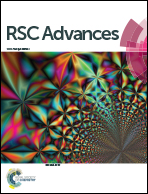Computational investigation of the interaction mechanism between the estrogen related receptor α and its agonists
Abstract
Estrogen related receptor alpha (ERRα), the first identified orphan nuclear receptor, participates in the metabolism of body and adjusts some diseases such as breast cancer, osteoporosis and diabetes. Recent experiments have identified several ligands such as 7a, 7b, DK1 and DK3 toward ERRα as agonists, to have a therapeutic ability in reducing blood glucose, and impact the activity of ERRα receptor. Nevertheless, the detailed interaction modes between the agonists and the ERRα have not been fully understood, which will hinder the design and development of more potent agonists targeting ERRα for the treatment of diabetes. To address this issue, molecular docking and molecular dynamic simulation (MD) were performed to study how the four agonists regulate the behavior of ERRα. It was found that a proved residue Phe232 and some others such as Arg276, Phe286, His398 and Phe399 were the key residues in the ligand binding pocket. Hydrogen bonds between agonists and residues Arg276 and His398 and the pi–pi interactions between agonists and Phe232/Phe286/Phe399 both play important roles for agonist–ERRα binding. Interestingly, we observed that the agonists kept the binding of ERRα and its coactivator PGC-1α by stabilizing the site of helix12 (H12). All these findings are not only beneficial to understand the interaction mechanism between ERRα and its agonists, but also provide clues for designing novel and potent agonists of ERRα for the treatment of diabetes.


 Please wait while we load your content...
Please wait while we load your content...